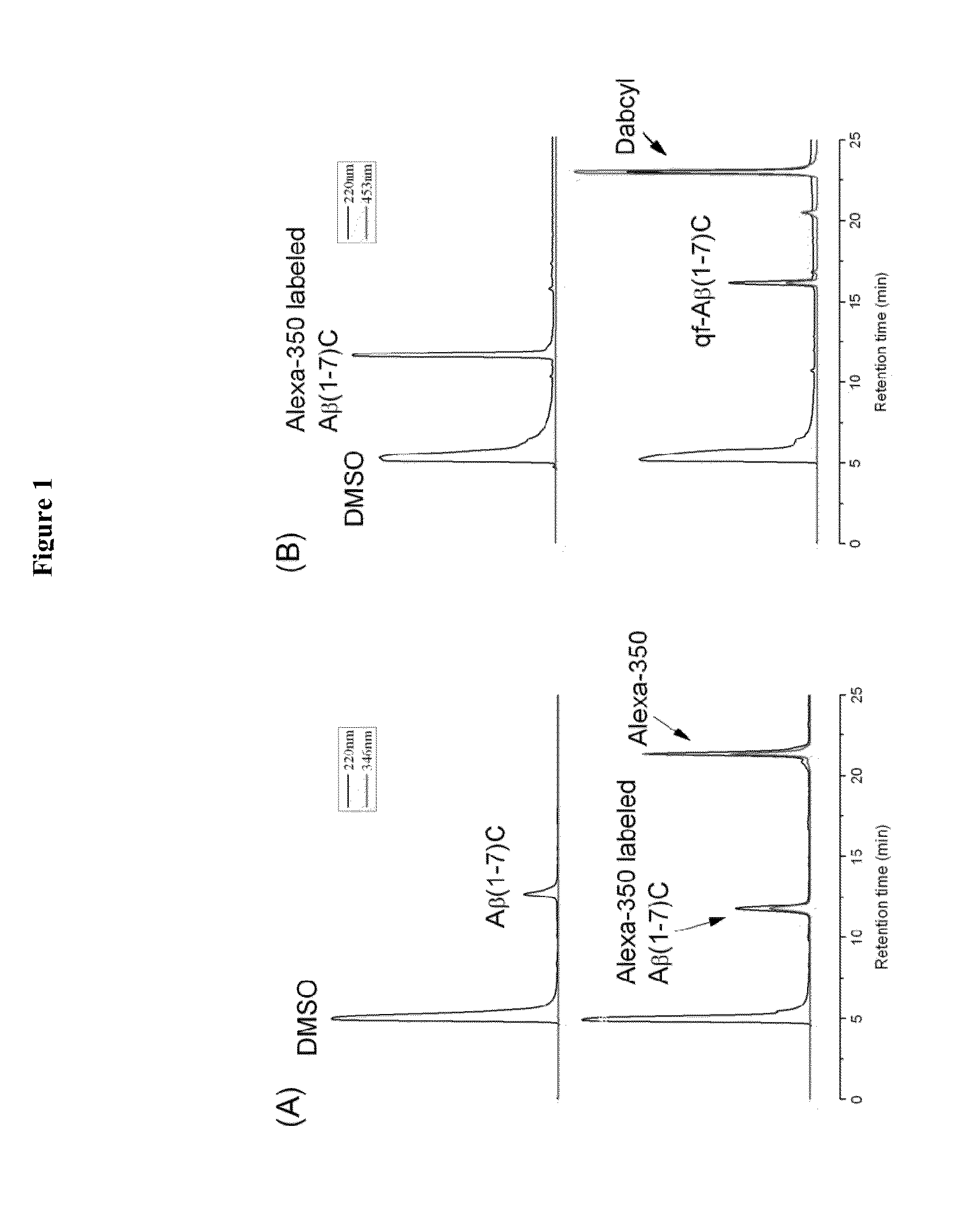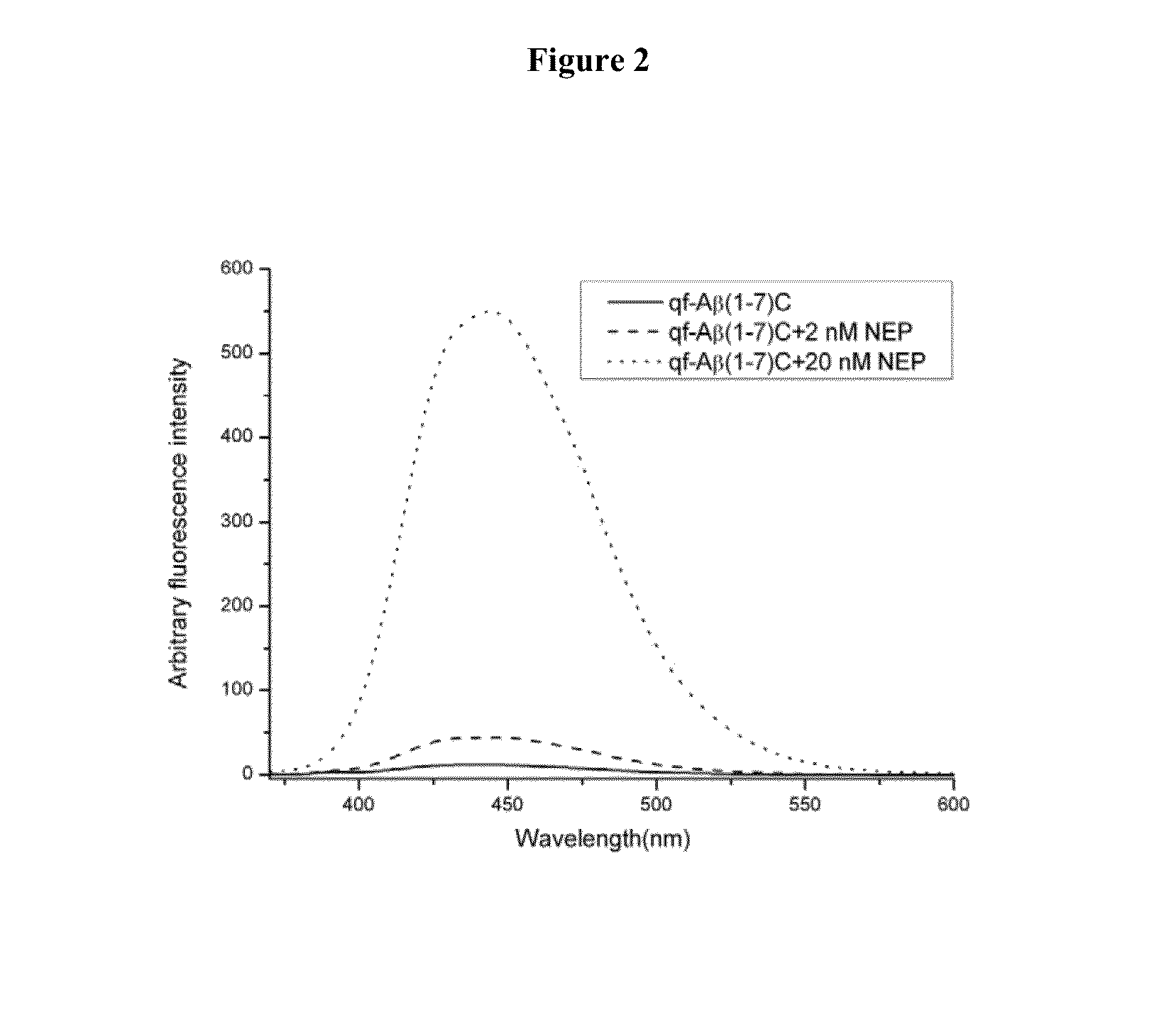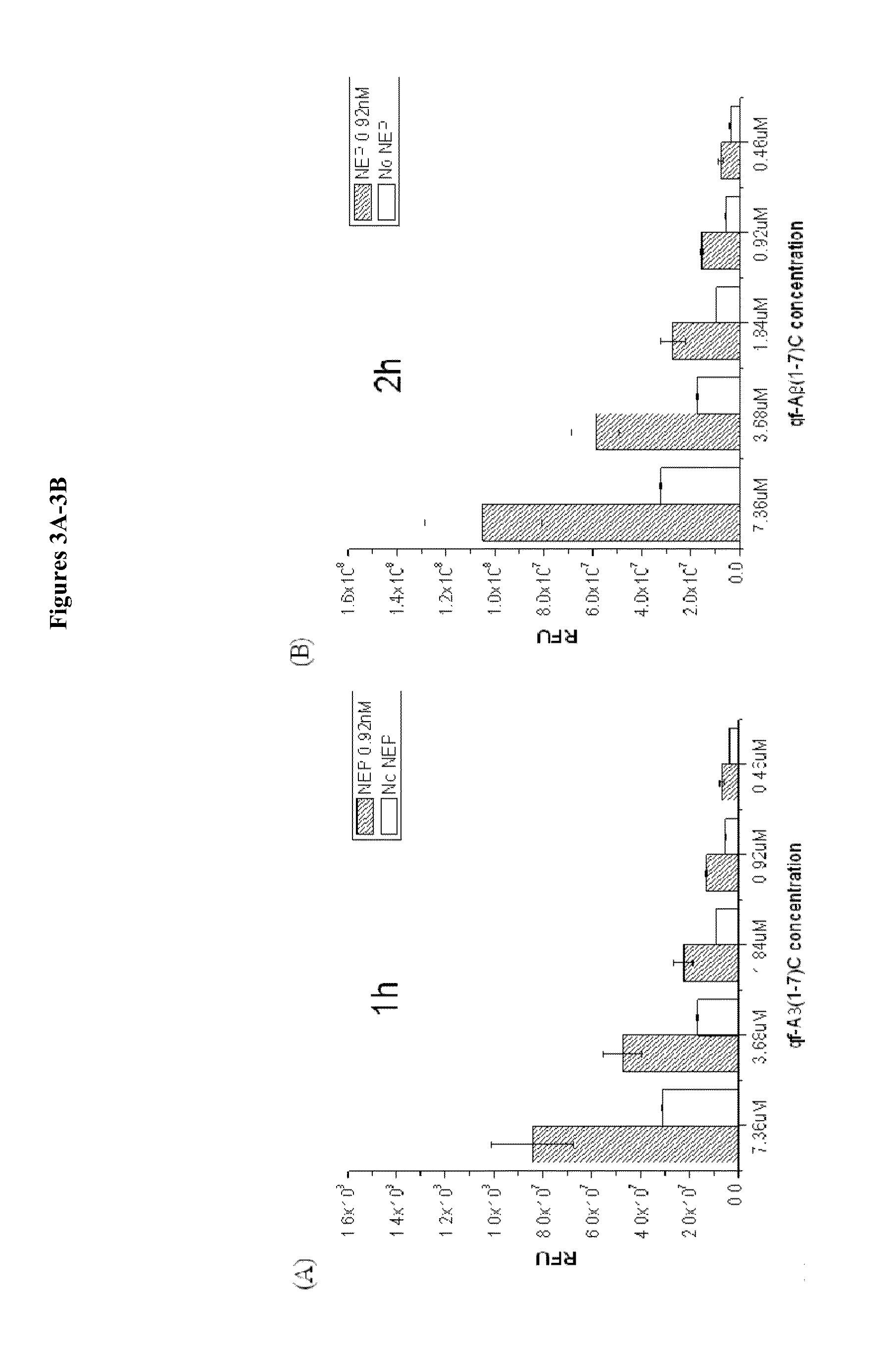Compositions and methods for detecting amyloid-beta-degrading enzyme activity
a technology of amyloidbeta and enzyme activity, which is applied in the field of screening for agents, can solve the problems of slow loss of function, huge care cost of patients, and no effective treatment has yet been found
- Summary
- Abstract
- Description
- Claims
- Application Information
AI Technical Summary
Benefits of technology
Problems solved by technology
Method used
Image
Examples
example 1
Synthesis of the Peptide Substrate Aβ(1-7)C for Detecting amyloid-β-Degrading Enzymes
[0107]The peptide Aβ(1-7)C (sequence DAEFRHDC), corresponding to residues 1 to 7 of the Aβ peptide followed by a cysteine residue, was prepared by the Fmoc-polyamide method on a PS3 peptide synthesizer (Rainin, USA). Preloaded Fmoc-Cys-Wang resin (substitution 0.58 mmol / g) was purchased from Anaspec Inc. (USA) and used in the synthesis. Fmoc-amino acid derivatives (0.4 mmol) were coupled to 0.1 mmol of resin using 0.4 mmol of benzotriazole-1-yl-oxy-tris-pyrrolidino-phosphonium hexafluorophosphate in dimethylformamide (DMF) containing 4.45% (v / v) of N-methyl morpholine. Fmoc cleavage was performed using 20% (v / v) piperidine in DMF. The peptides were cleaved from the resin by stirring at room temperature for 1-2 h with a mixture of 9.4 mL of trifluoroacetic acid, 0.1 mL of triisopropylsilane, 0.25 mL of water, and 0.25 mL of ethanedithiol and precipitated with three volumes of ice-cold methyl t-butyl...
example 2
Synthesis of the Quenched Fluorogenic Peptide Substrate
[0108]The thiol-reactive Alexa-350 (Alexa Fluor® 350 C5-maleimide) and amine-reactive Dabcyl (4-(4′-N,N-dimethylaminophenyl)azobenzoic acid) (Invitrogen) were used as the fluorescence donor and quencher, respectively. The cysteine residue at the C-terminus of Aβ(1-7)C was used to attach the thiol-reactive donor. Alexa-350 is optimally excited at 346 nm and has bright blue fluorescence emission. Dabcyl was added to the N-terminus of the peptide. Peptide Aβ(1-7)C was dissolved in a mixture of 10 mM Tris-HCl / DMSO [1 / 2.3 (v / v), pH 7.2] at a final concentration of 1.6 mM. One milliliter of peptide solution was taken and 17.3 μL of 50 mM TCEP (tris(2-carboxyethyl)phosphine) added to avoid disulfide bond formation, then 43 μL of 40 mM Alexa-350 in DMSO was added dropwise and the mixture reacted overnight with gentle inversion at room temperature. The Alexa-350-labeled peptide was separated from the unlabeled peptide free Alexa-350 by r...
example 3
[0109]1.84 μM qf-Aβ(1-7)C in 50 mM Tris-HCl (pH 7.5) was reacted with 2 or 20 nM NEP at room temperature for 1 h in a 3-mm path-length rectangular cuvette on a FP-750 spectrofluorometer (Jasco, Japan) and the fluorescence emission between 375 and 600 nm measured with excitation at 346 nm (FIG. 2).
PUM
| Property | Measurement | Unit |
|---|---|---|
| total volume | aaaaa | aaaaa |
| total volume | aaaaa | aaaaa |
| total volume | aaaaa | aaaaa |
Abstract
Description
Claims
Application Information
 Login to View More
Login to View More - R&D
- Intellectual Property
- Life Sciences
- Materials
- Tech Scout
- Unparalleled Data Quality
- Higher Quality Content
- 60% Fewer Hallucinations
Browse by: Latest US Patents, China's latest patents, Technical Efficacy Thesaurus, Application Domain, Technology Topic, Popular Technical Reports.
© 2025 PatSnap. All rights reserved.Legal|Privacy policy|Modern Slavery Act Transparency Statement|Sitemap|About US| Contact US: help@patsnap.com



